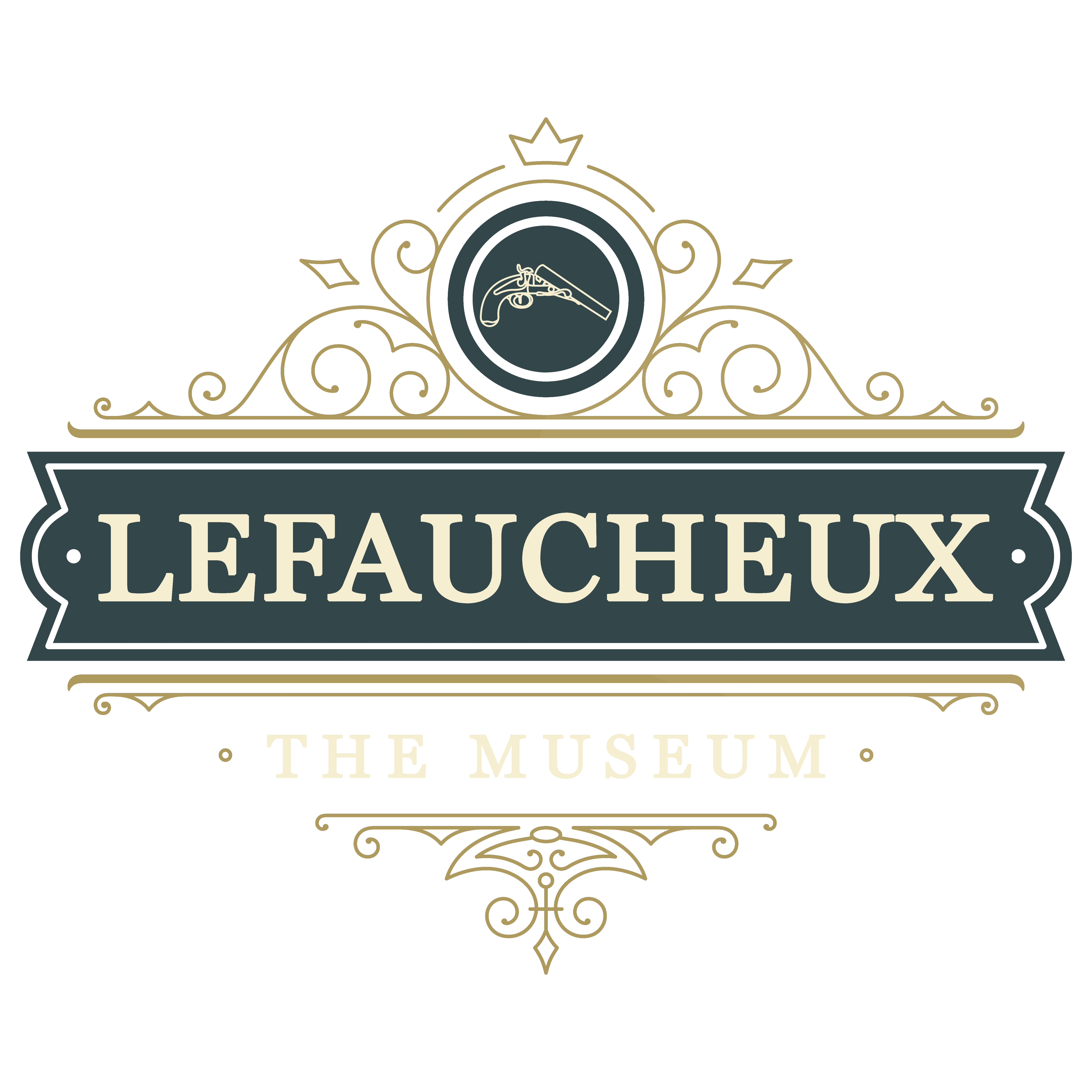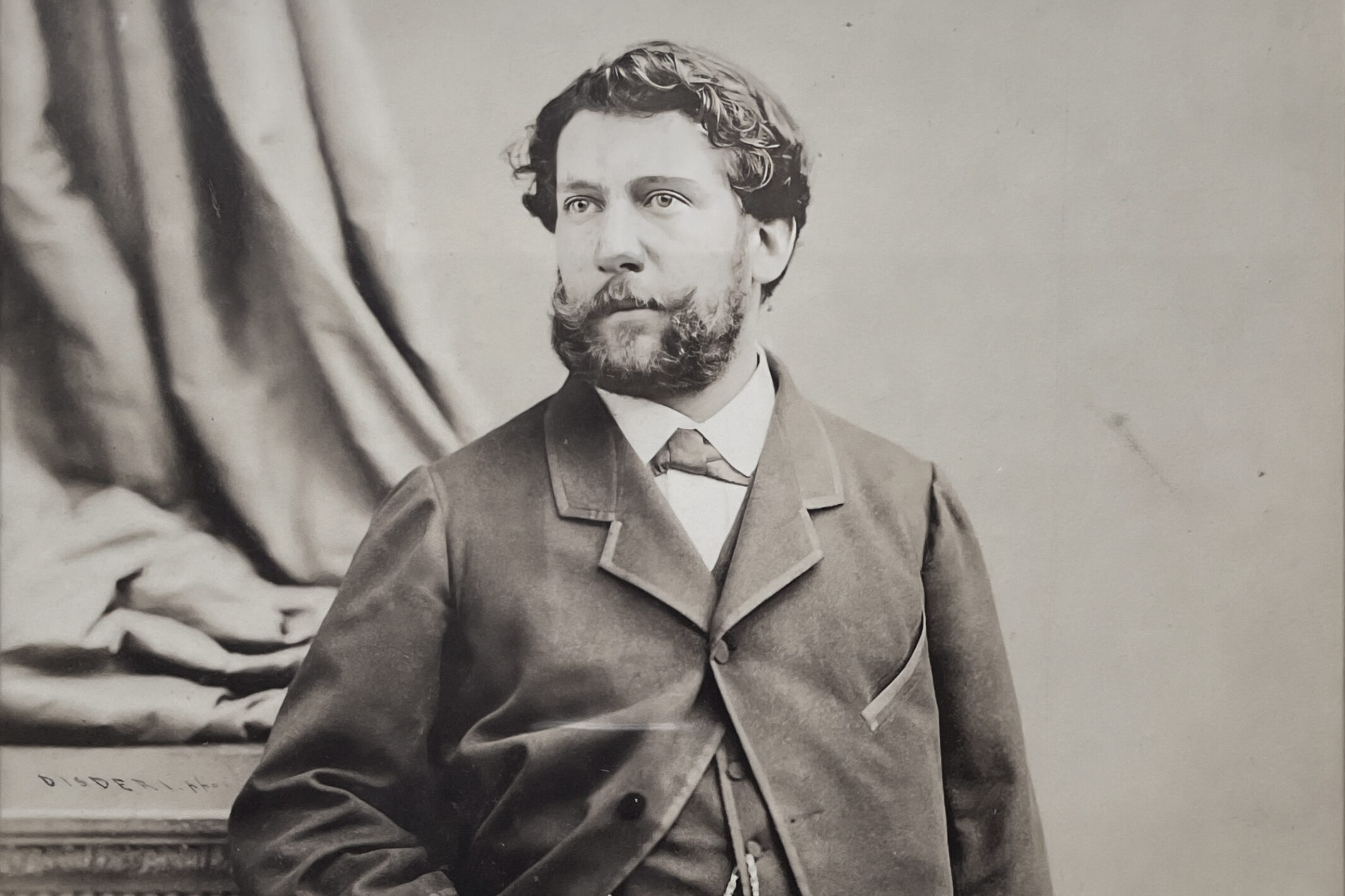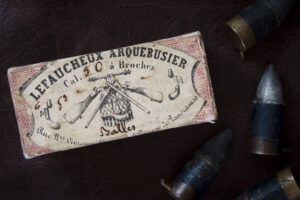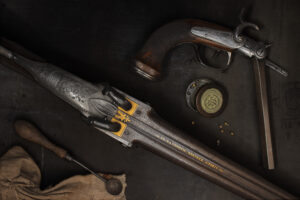For anyone fascinated by the innovation and intricacies of 19th-century weaponry, the name Eugène Lefaucheux resonates as a key figure. Renowned for developing the Model 1854 pinfire revolver, a significant advancement in firearm technology, Eugène Lefaucheux’s creations became standard issue in the French Navy and were embraced by numerous European governments for officer armament. Yet, behind his famed inventions lies a story of a visionary, whose life and career extended far beyond his notable contributions to firearms engineering.
The details of Eugène’s journey, from his early days in Paris to his impact on the global arms industry, are meticulously chronicled by Guillaume van Mastrigt. A respected historian, van Mastrigt manages the Eugène Lefaucheux Family Archives in France, dedicating his expertise to preserving and interpreting the rich legacy of the Lefaucheux family. His insights provide a profound understanding of not only the technical achievements of Eugène but also the personal endeavors and challenges that shaped his career.
Early Life and Family Background
Eugène Gabriel Lefaucheux, son of Casimir, was born at 10 rue Jean-Jacques Rousseau in Paris on September 14, 1832. After his family moved to Ponts de Gennes in the Sarthe following the sale of his father’s company to Mr. Jubé, in 1835, Eugène’s education was overseen by a priest. This period, likely at the age of 13 upon the family’s return to Paris in 1845, marked the beginning of Eugène’s apprenticeship in gunsmithing. He started in the family workshop and progressed through various stages of improvement and observation in France and Belgium, under the careful guidance of his father.
The Lefaucheux family relocated to the now-famous 37 rue Vivienne on March 16, 1850. The following year, Eugène attended the London Exhibition, a pivotal event where he met Samuel Colt. This encounter significantly influenced him, inspiring him to adopt industrial manufacturing methods similar to Colt’s in his own workshops.
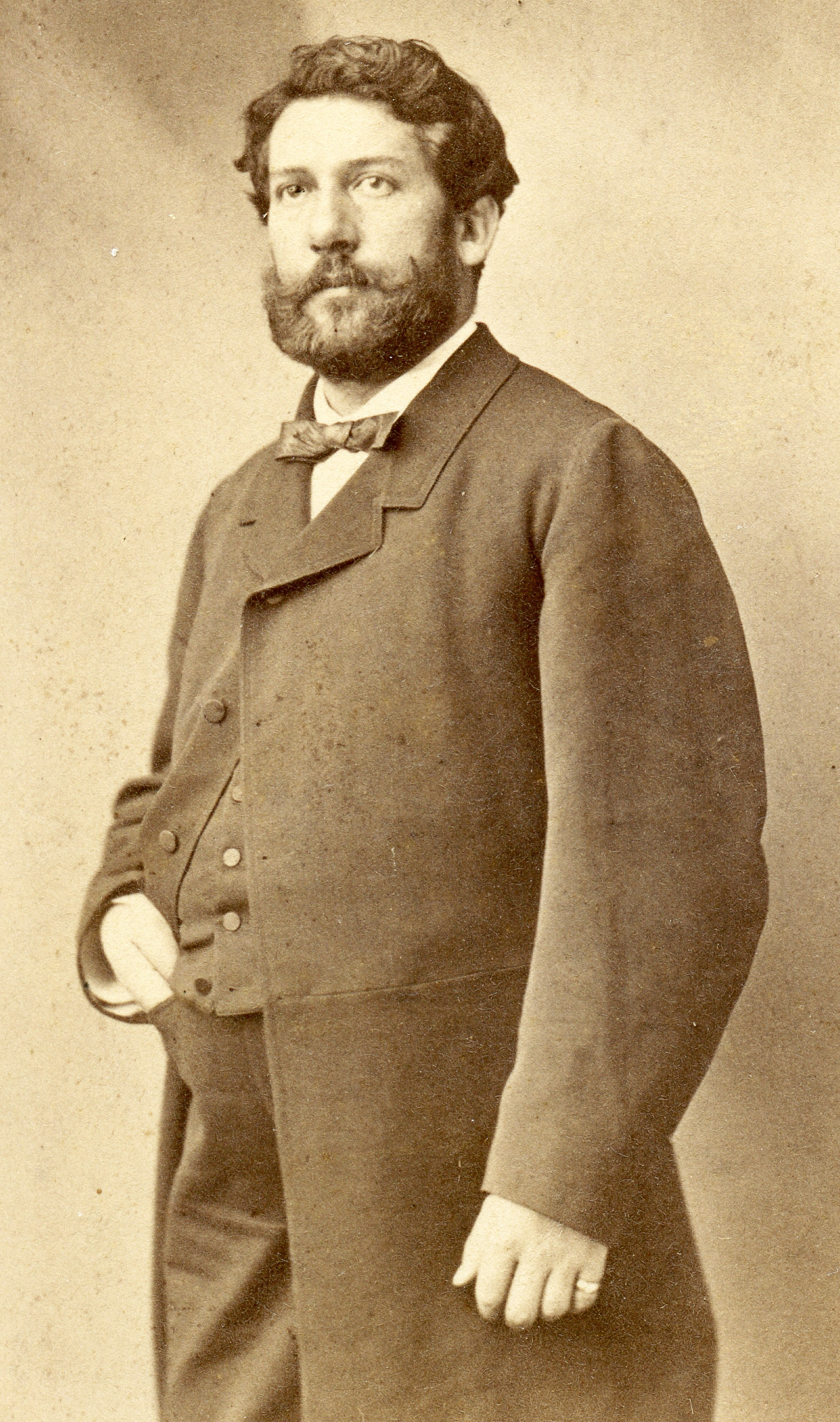
This marked a new professional standard for him. Around the same time, he received favorable news regarding his military obligations; since his draft number, 417, was not called in the lottery, he was exempt from service. This exemption allowed him to fully dedicate himself to managing his father’s business, which he took over following his father’s death at their home on August 9, 1852.
Eugène reestablished contact with Jules Gévelot, son of the founder of the Société Française Des Munitions who had purchased the cartridge patent from Casimir Lefaucheux. Jules played a decisive role in Eugène’s career, convincing supporters like Mr. Bigot and Mr. Binard to back Eugène. He also facilitated introductions to various ministries, including the Ministry of War, leveraging his established connections.
The Model 1854 Revolver: A Milestone in Firearms Innovation
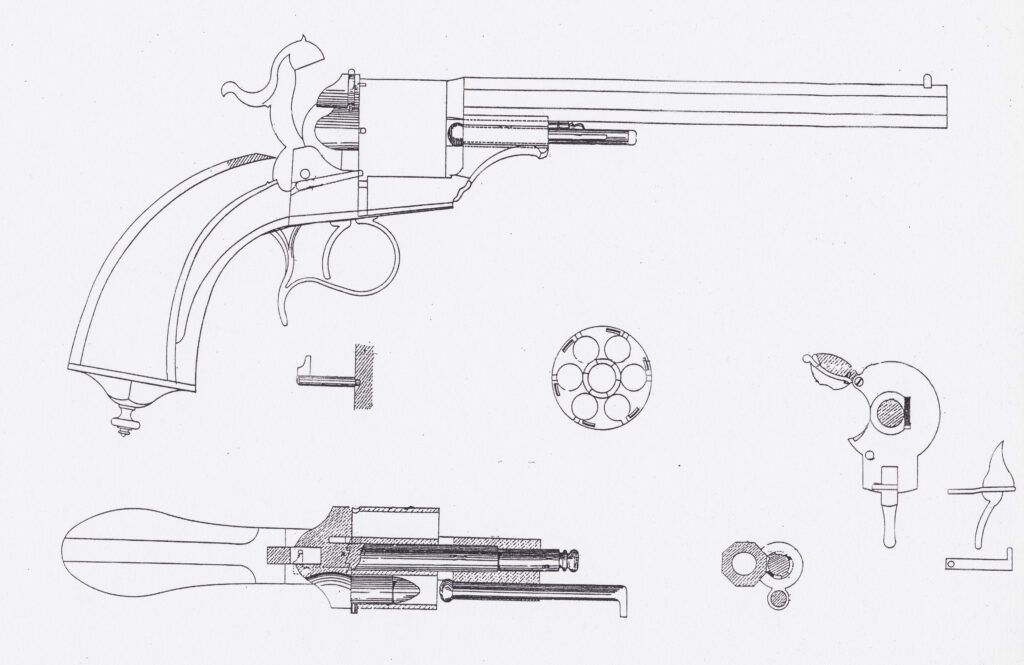
On April 15, 1854, Eugène Lefaucheux laid the cornerstone of his enduring legacy by filing patent number 019380 for a revolver, a design that has stood the test of time. Later that year, on November 4, he refined his design with an amendment to the original patent, paving the way for initial testing. Even before this amendment, his 1854 revolver had already been entered into a competition against Colt and Adams on September 16, as part of the French Navy’s initiative to update its arsenal.
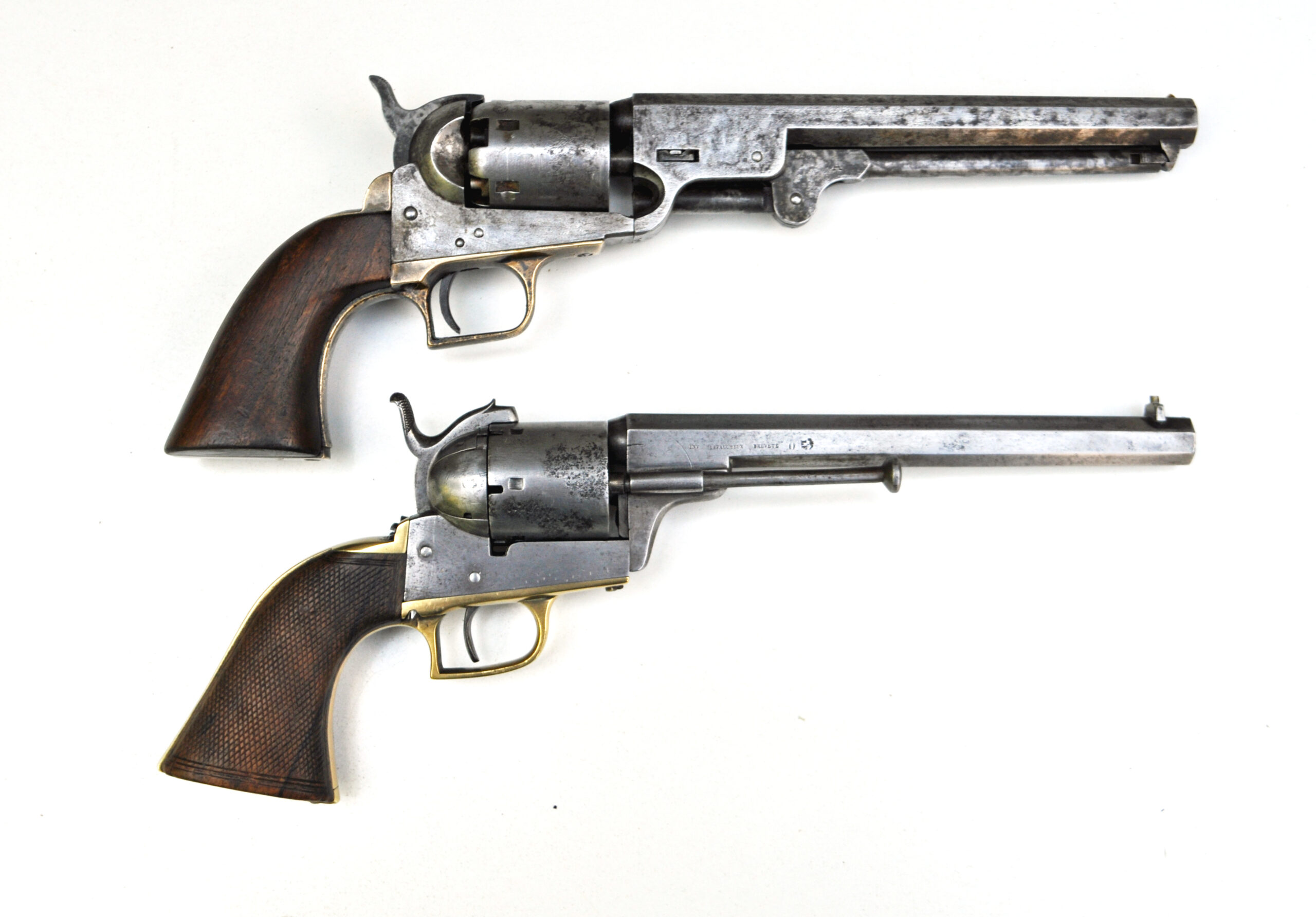
In response to the growing business and the need for organized production, Lefaucheux, along with partners Bigot and Binard, founded “E. Lefaucheux et Cie.” on January 14, 1855. The company’s headquarters were set up at the residence of Eugène’s mother at 37 rue Vivienne. On March 24, 1855, a second company was established to take over from the first, with the inclusion of Mr. Henry Fernandez Patto, a trader from Bayonne, who opened up the Iberian market. As business expanded, the premises at 37 rue Vivienne became insufficient, prompting the leasing of additional workshops at 9 and 9 bis rue Lafayette from Mr. Binard to accommodate the increasing demand.
Eugène secured his initial contract with the Navy on January 2, 1856, agreeing to supply six model 54 revolvers, half of them with rifled barrels and the rest with smooth barrels. Later that year, on September 5, 1856, he achieved another milestone by patenting the “small pistol,” notable for its double-action swinging mechanism, which turned into a commercial triumph under Patent 29055.
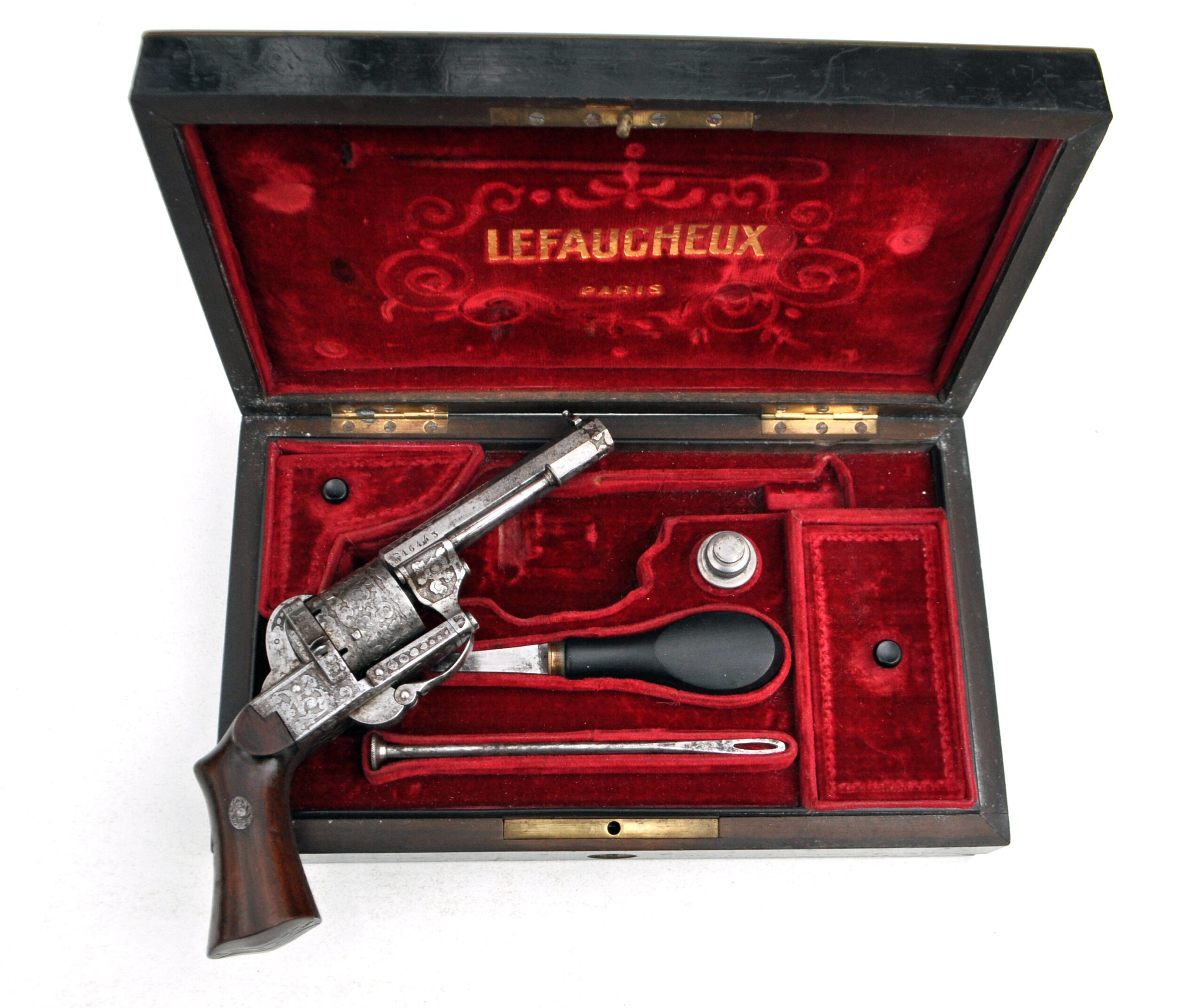
The apex of recognition came when he signed and partially sold his April 15, 1854, patent to the French Navy on May 8, 1858. Subsequently, the design and development of the “58 de Marine” moved beyond the direct control of our inventor. Meanwhile, the Lafayette Street factory was producing the “1854 civilian with a military vocation,” very close to the standard model, which would become Eugène’s flagship product and secure his worldwide fame and fortune. Following the Navy’s approval, production of 1,500 revolvers commenced at the Saint Etienne Manufacture. “E. Lefaucheux et Cie.” received its first bonus, with 250 of these weapons reserved for the Indochina Division and shipped on the Darne in early 1859.
Expanding Production and Personal Milestones
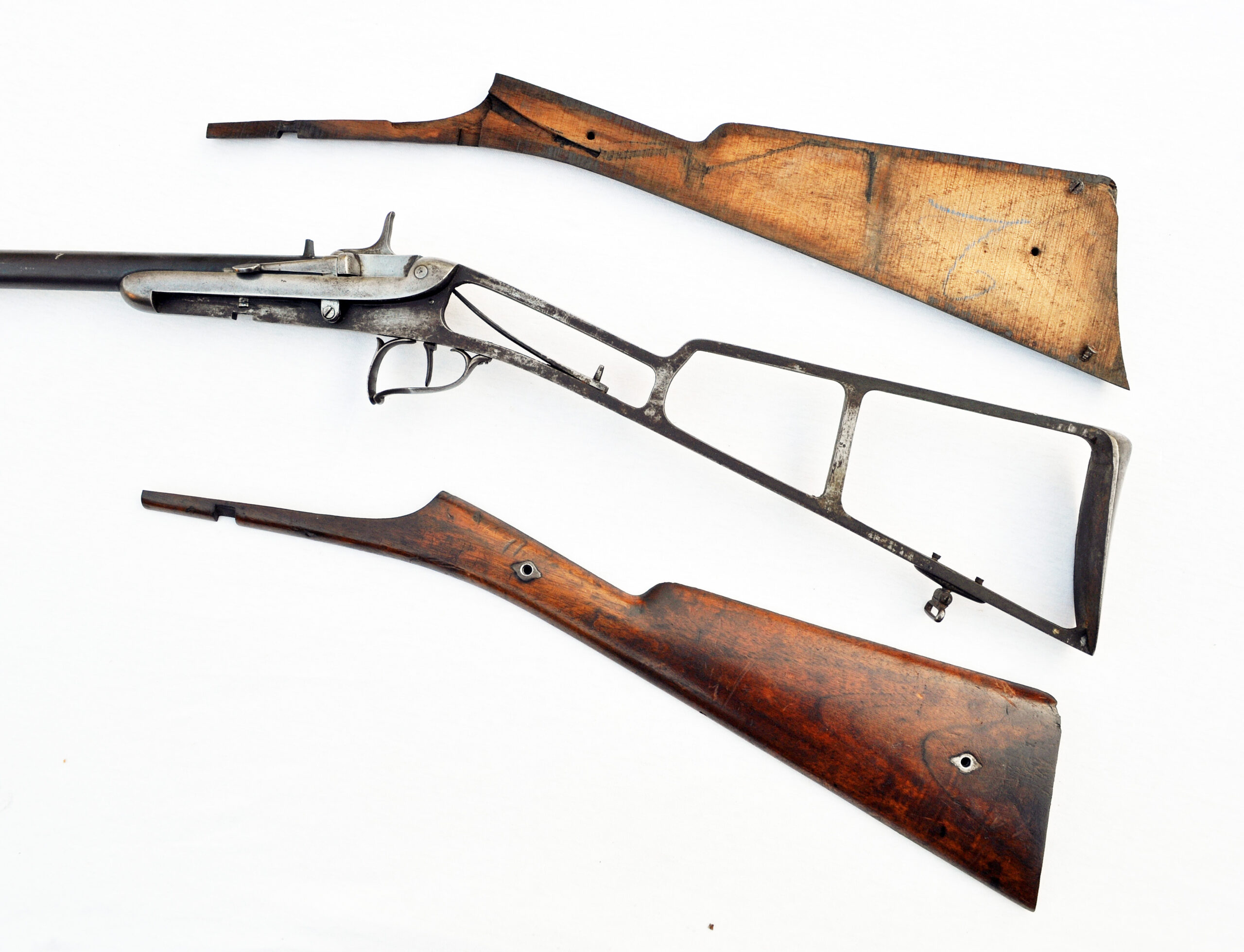
Eugène Lefaucheux’s journey into rifle manufacturing began with patent 043104 on December 5, 1859, which described a rifle and pistol with a metal frame, fixed barrel, and a moving breech and ejector. Faced with increasing demands and cramped facilities at 9 rue Lafayette, Eugène secured a plot of land at 104 rue Lafayette in October 1858. Construction of a new, modern factory commenced immediately, equipped with a 12 HP steam engine and a 25 HP generator. By 1860, this factory was producing 1,200 revolvers weekly, with the workforce growing from 170 to 225 workers by 1863. The head office also relocated from 37 rue Vivienne to 9 rue Lafayette, marking the start of the third iteration of his company.
During this period of expansion, Eugène faced personal trials as well, with the deaths of his close associates Mr. Binard in 1860 and Mr. Bigot in 1861. At 30 years old, leading a flourishing business but still unmarried, Eugène proposed to Marie-Louise Elisabeth Bigot, the daughter of his deceased associate. This union was marked by the filing of patent 55784 on September 27, 1862, introducing Triple Action weapons.
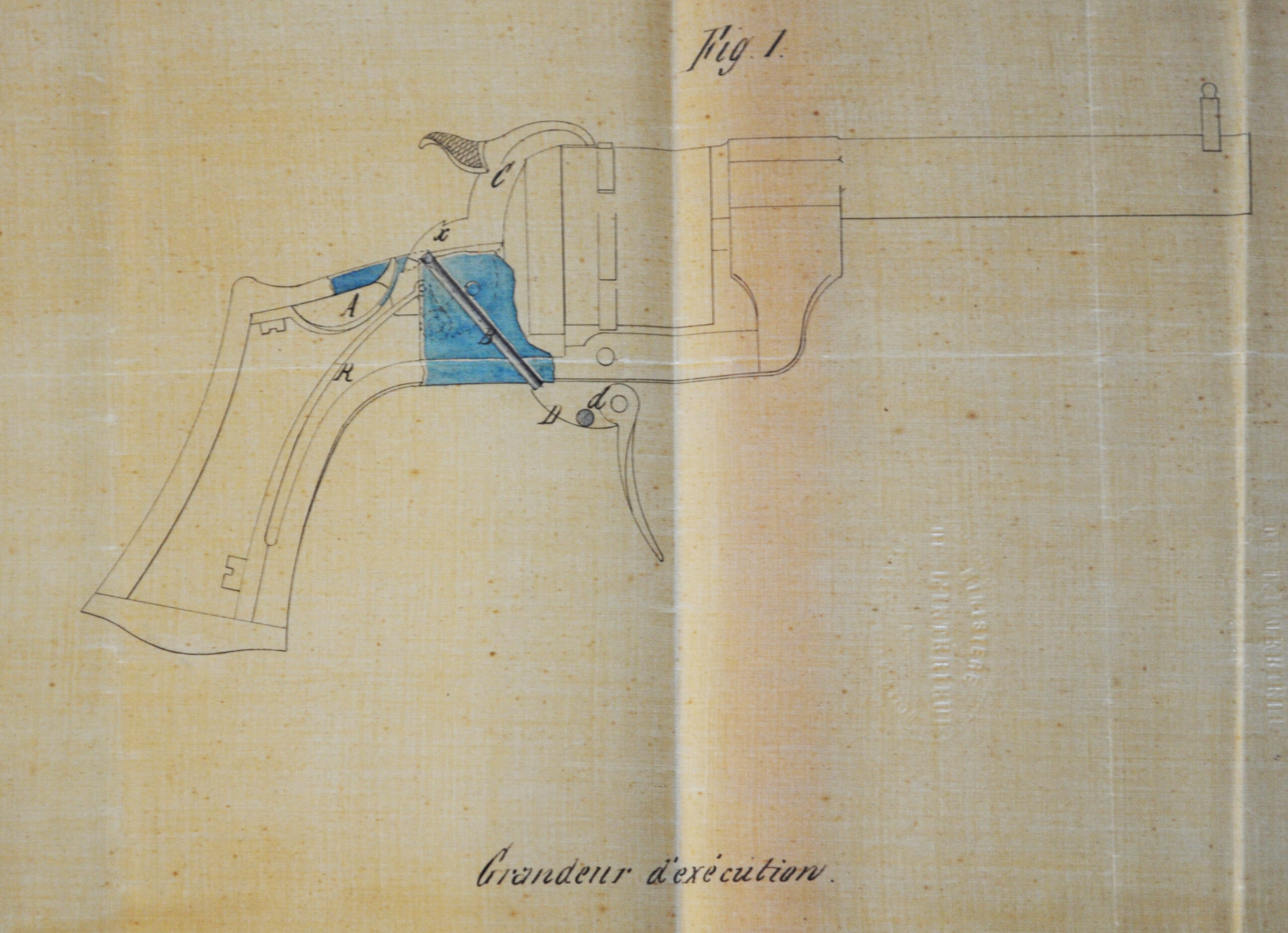
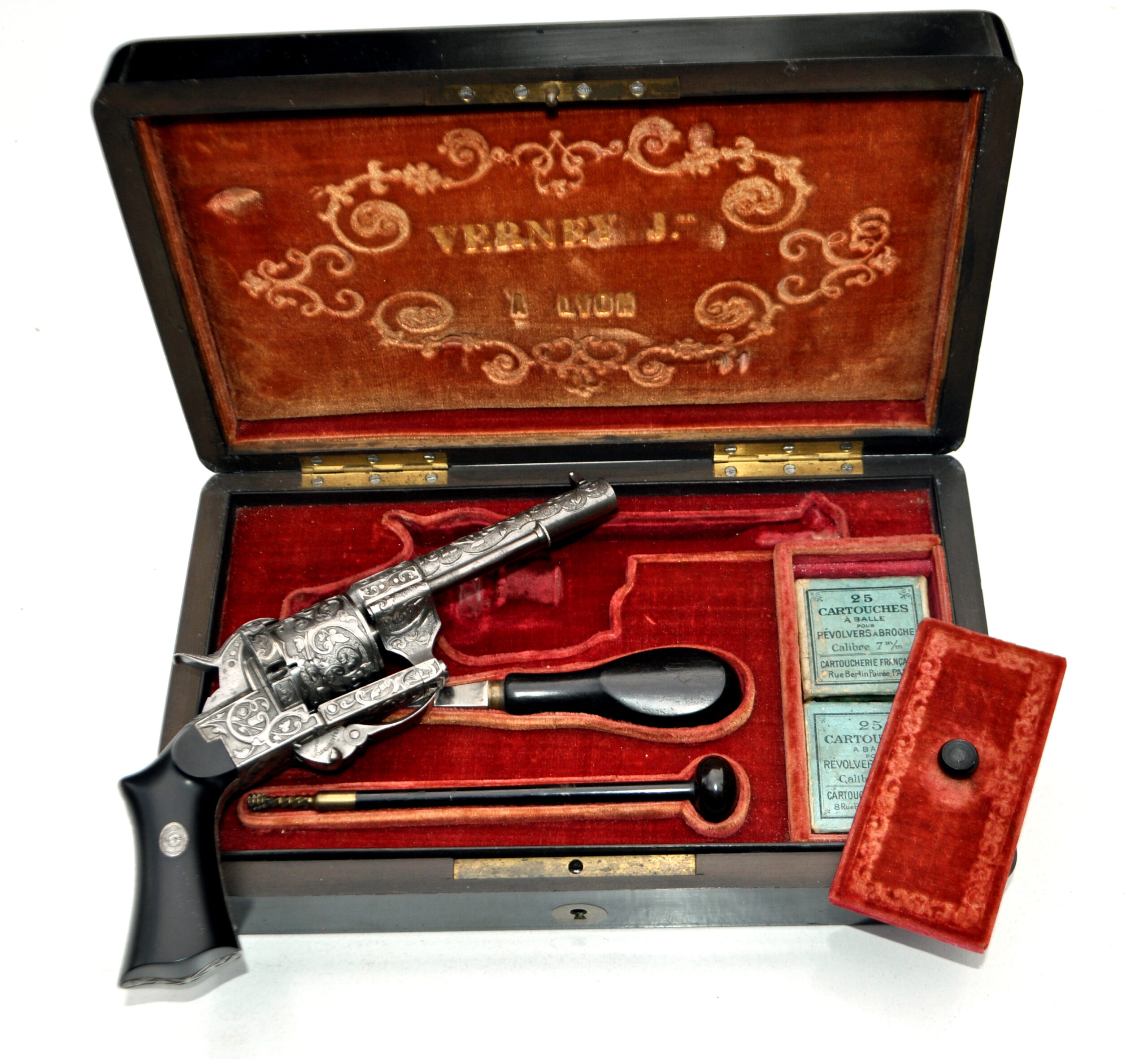
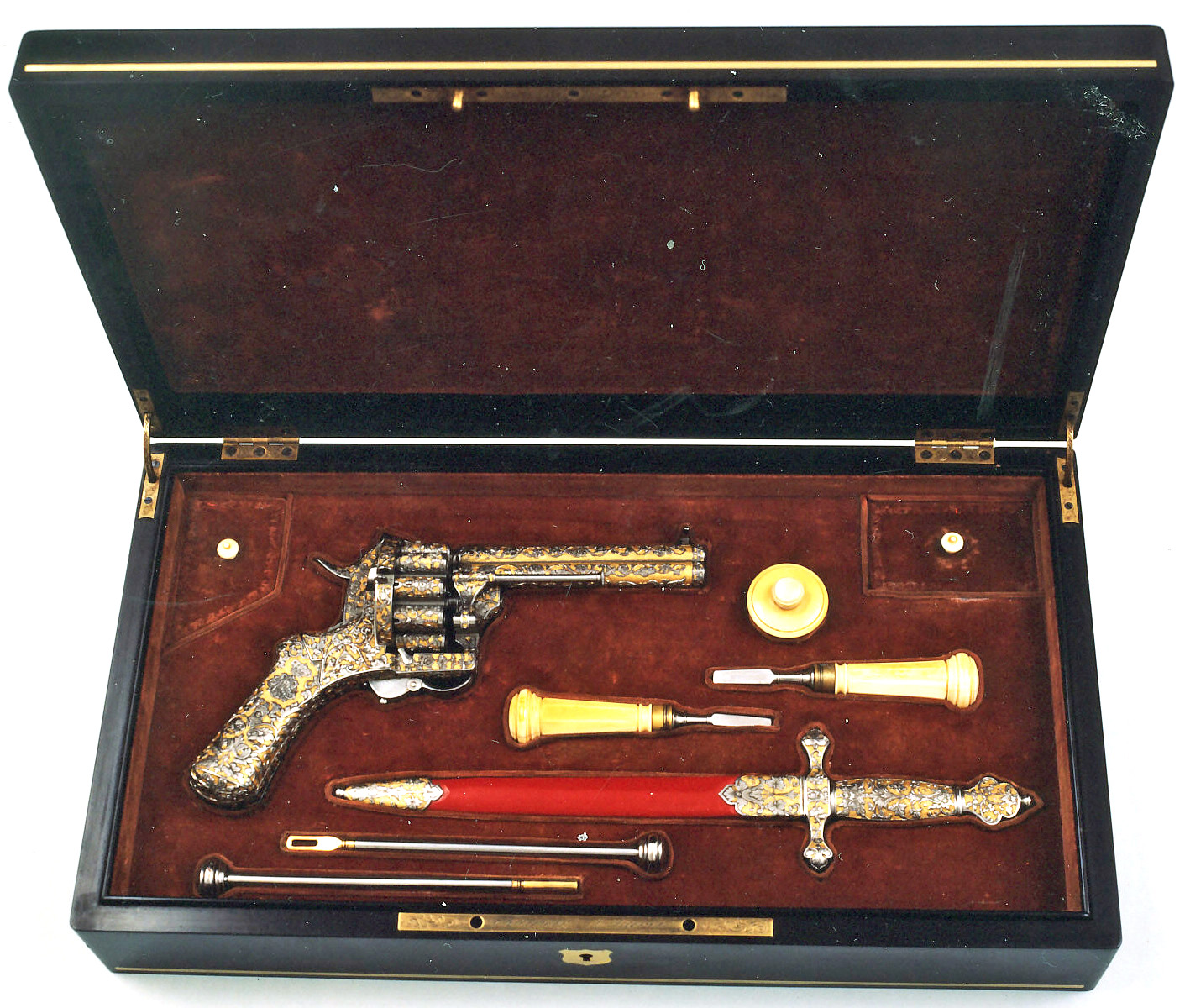
Further changes came with the death of Constance Françoise Faivre, widow of Casimir Lefaucheux, in 1863. This led to a reorganization of the “Maison Lefaucheux” management, transferring operations to Casimir Lefaucheux’s daughter, Constance, and son-in-law, Jean Pierre Alexis Laffiteau. In 1864, Eugène took out a patent for a revolver with stacked barrels and a Triple Action mechanism, reflecting continuous innovation in his designs. That same year, he purchased the Château of Bruyères le Châtel, symbolizing both his personal and professional achievements.
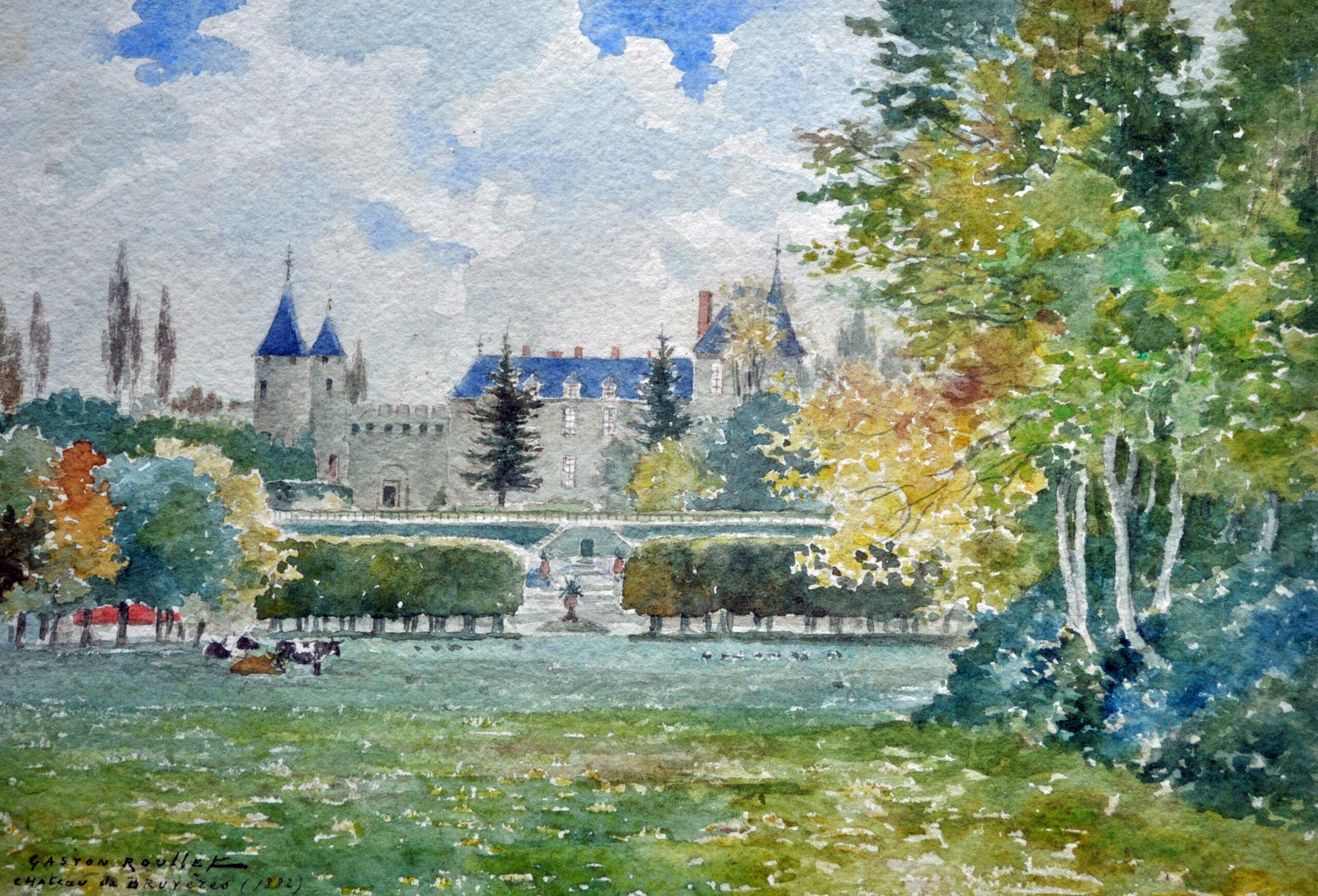
Strategic Expansion and Challenges in Liège
Eugène Lefaucheux’s fascination with the gunsmithing expertise in Liège led him to establish a branch there in December 1864, acquiring a property at 13 quai Fragnée on March 2, 1865. This strategic move aimed to leverage the region’s dense population of skilled gunsmiths. However, challenges soon emerged. The commercial court of the Seine dissolved “E. Lefaucheux et Cie.” on July 3, 1867, leading to its liquidation and subsequent auction on August 31, 1867. Despite these setbacks, Eugène emerged as the sole owner and operator of both the Paris and Liège factories.
The production at Maison E. Lefaucheux found new life with the French army’s adoption of the Chassepot rifle in 1866, which strained state factories and opened opportunities for Eugène. In the fall of 1867, he secured a contract to convert 40,000 Dragoon rifles into tabatière rifles. This contract renewal came amidst changes in military technology, including a shift from the pinfire system to central percussion, which led to the development of the “model 1870 revolver.” This new model was contracted by the Ministry of the Navy on February 10, 1870, for 4000 units at a price of 40 francs each, but the contract’s fulfillment was delayed until 1872 due to the Franco-Prussian War and the Paris Commune.
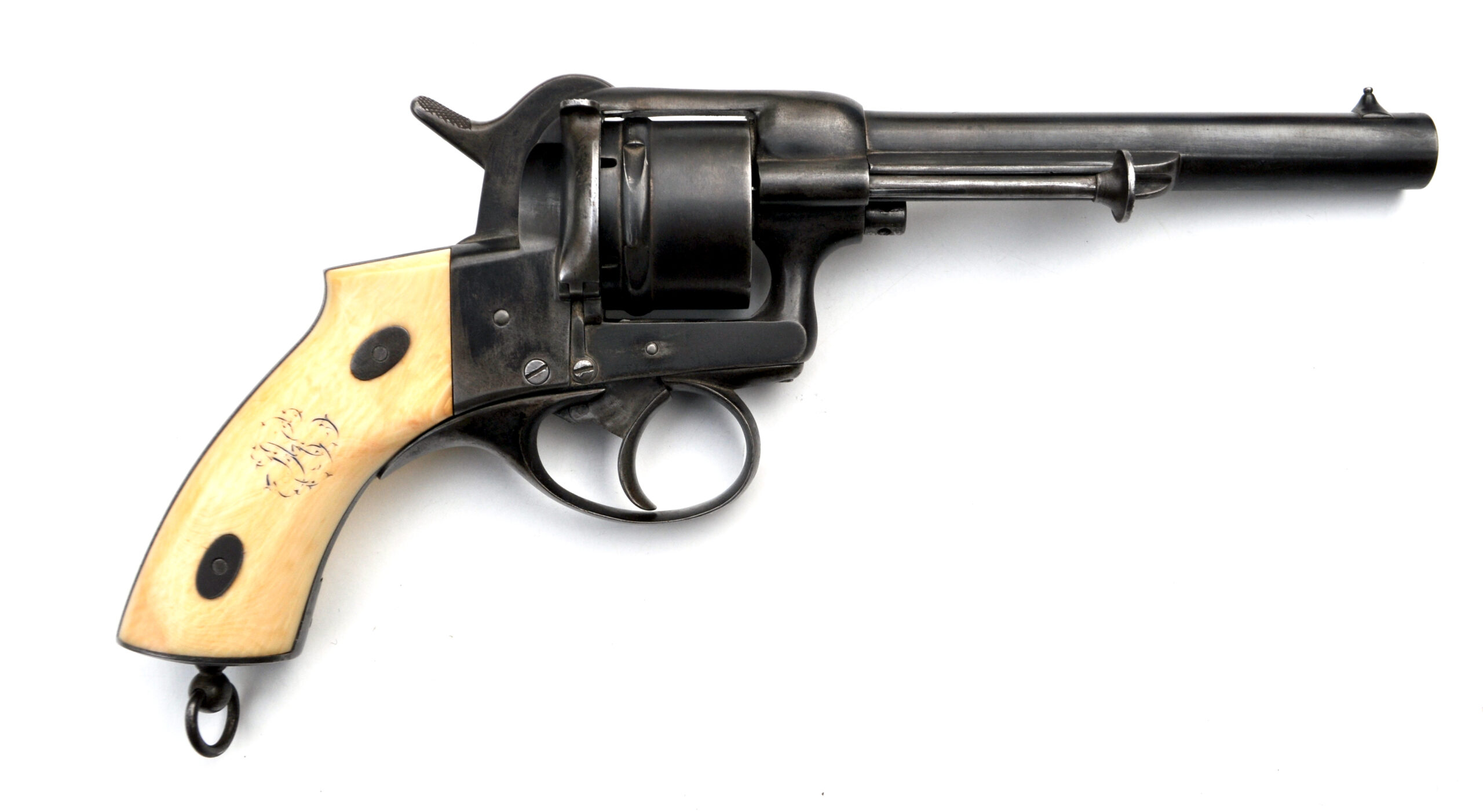
As the war unfolded in 1870, Eugène ensured the safety of his family by sending them to Vevey, Switzerland. He himself traveled to England and Belgium under a government mandate to procure weapons. Facing language barriers and unable to conclude contracts in England, he returned to Belgium. By January 1871, as his family rejoined him in Liège, Eugène, at 39 years old, began facing significant health issues, signaling a pivotal shift in both his personal and professional life.
Final Years and the End of an Era
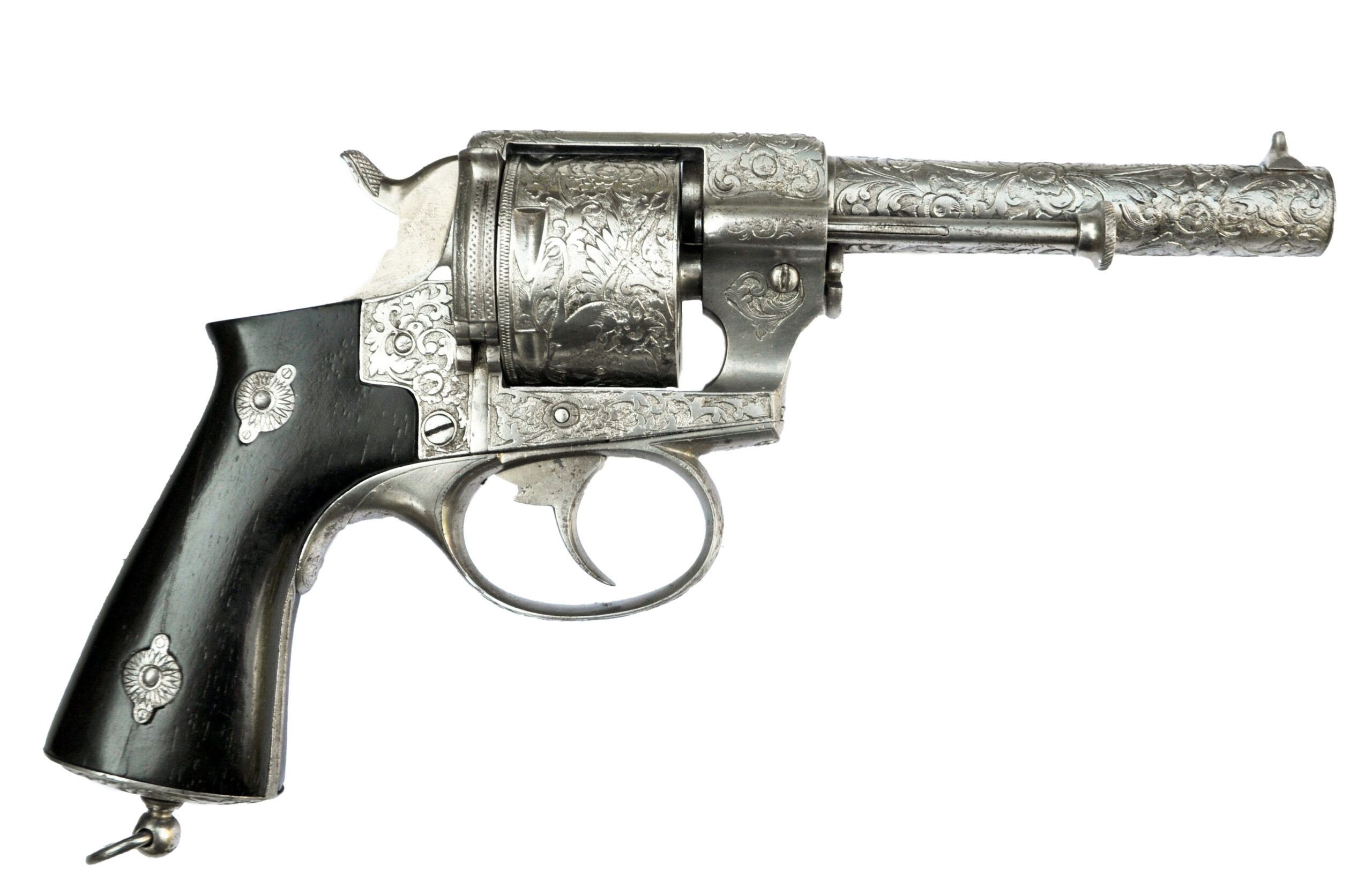
From 1873, production at Lefaucheux was significantly reduced, culminating in the “70” model, his last handgun. Facing intense competition and the Army’s adoption of the Chamelot-Delvigne revolver, Eugène decided to sell the Liège factory. The sale, managed by Gustave Bronne, was finalized on October 9, 1873, to Mr. Dacier, although Eugène retained his right to the Lefaucheux stamp. In 1874, he began decentralizing his operations by purchasing the old factory of Trémerolles near his château in Bruyères le Châtel. The Paris shop moved from 194 rue Lafayette to 32 rue Notre Dame des Victoires in a building owned by Jules Gévelot, with a lease signed on June 15, 1875. As his patents entered the public domain, this marked a gradual end to his industrial activities.
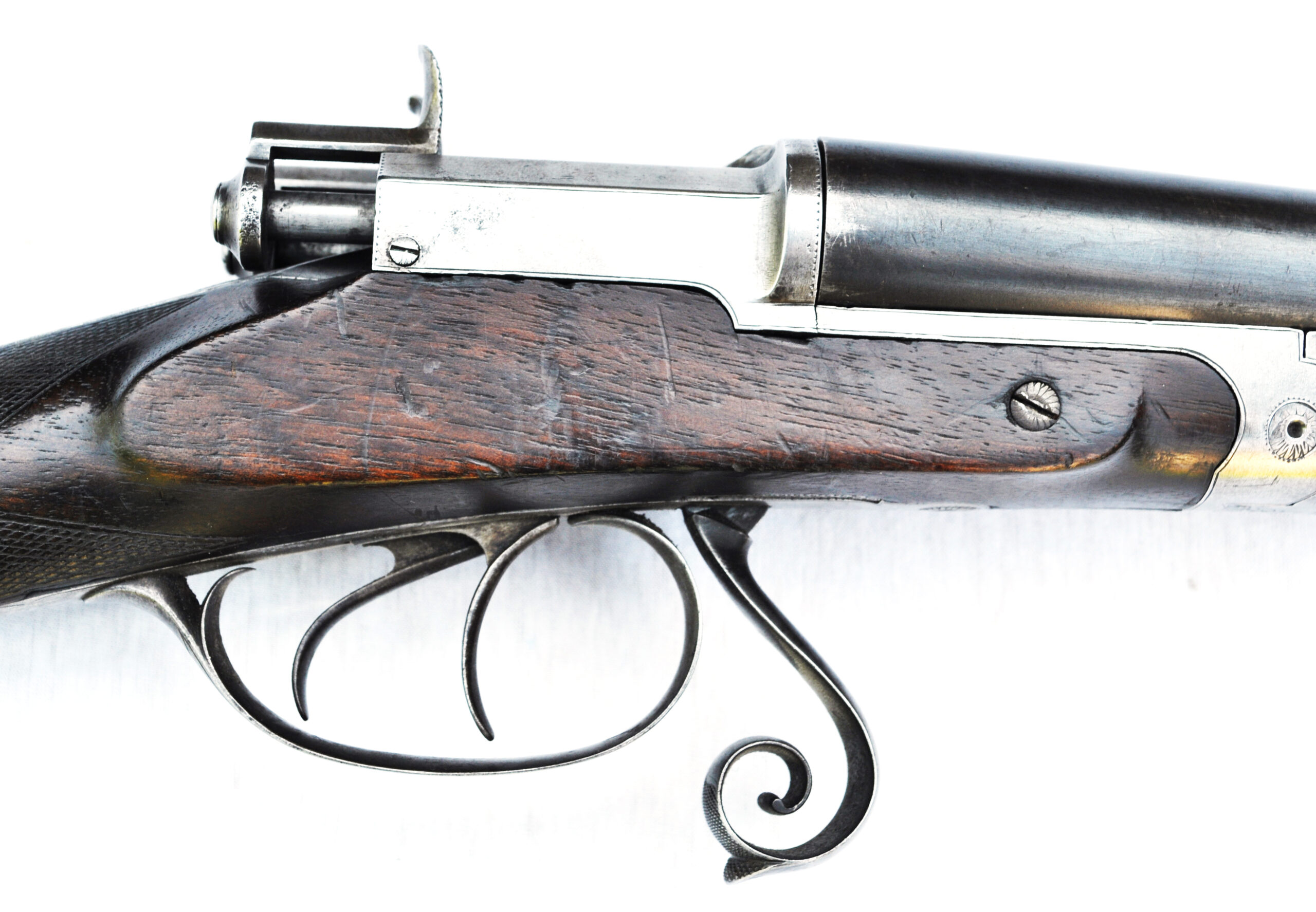
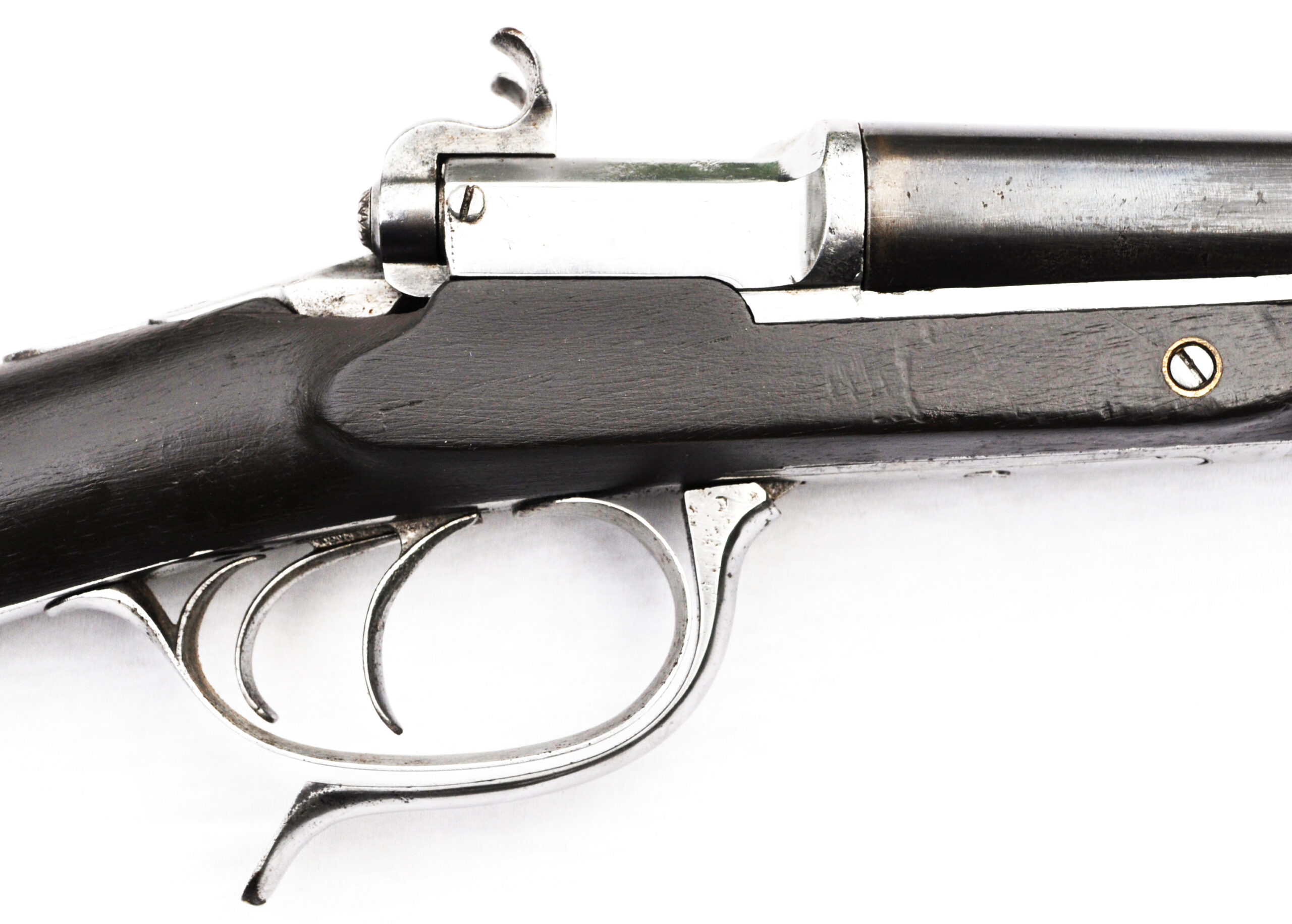
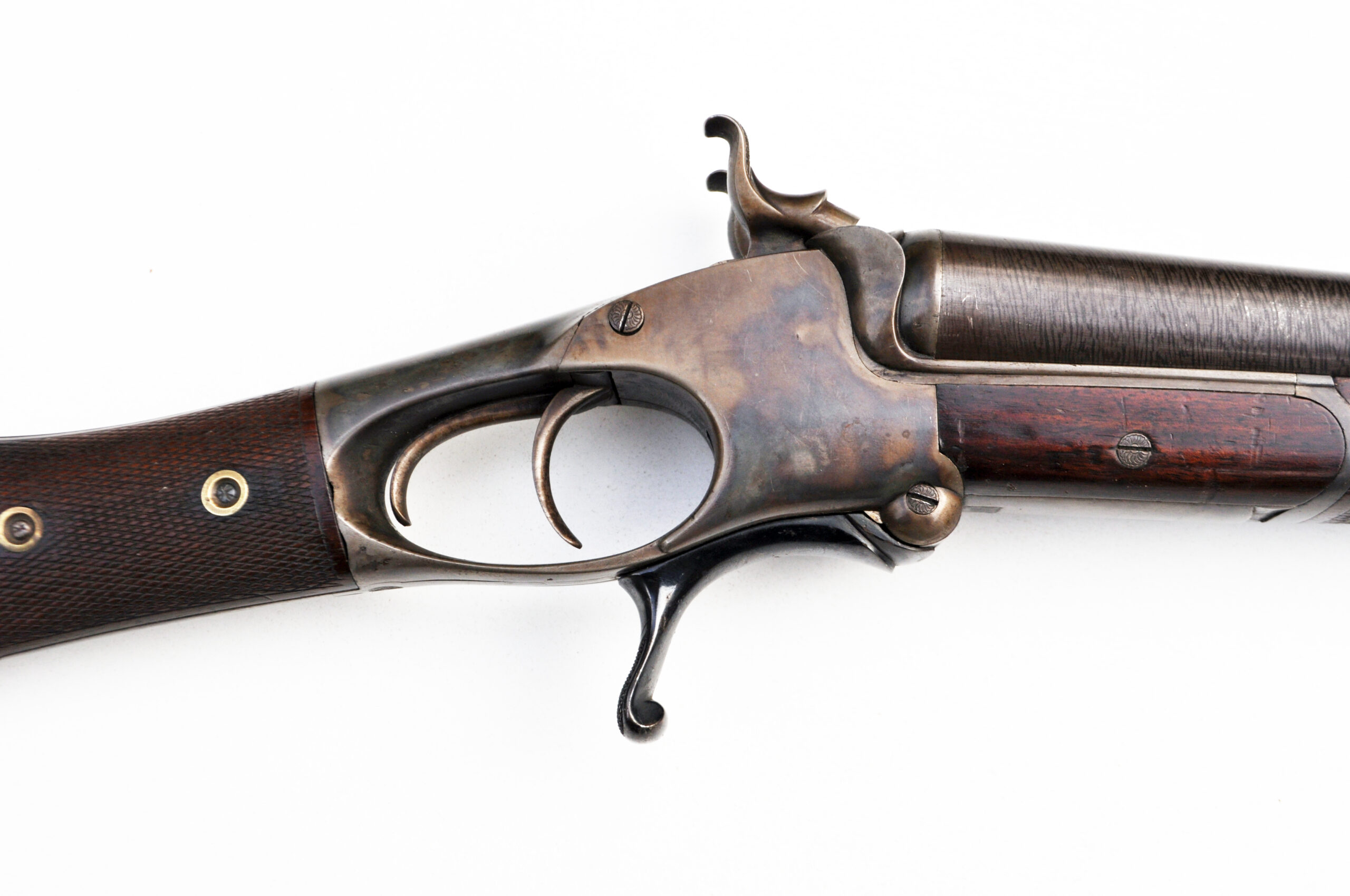
In 1877, Eugène transformed the unused factory on Lafayette Street into real estate development. He demolished the existing structures and constructed two identical Haussmann-style buildings, each with five square floors and an additional attic level, creating a significant source of income. By 1878, similar construction replaced the industrial premises at 192 and 194 rue Lafayette.
The Trémerolles factory, now the main site of operations since 1877, was adapted to produce 37mm caliber firing tubes for Hotchkiss cannons, manufacturing 4,400 units in 1878 and another 1,000 in 1880, and employed up to 150 workers. During this time, Eugène focused on developing his estate and managing the farm, shifting away from industrial manufacturing.
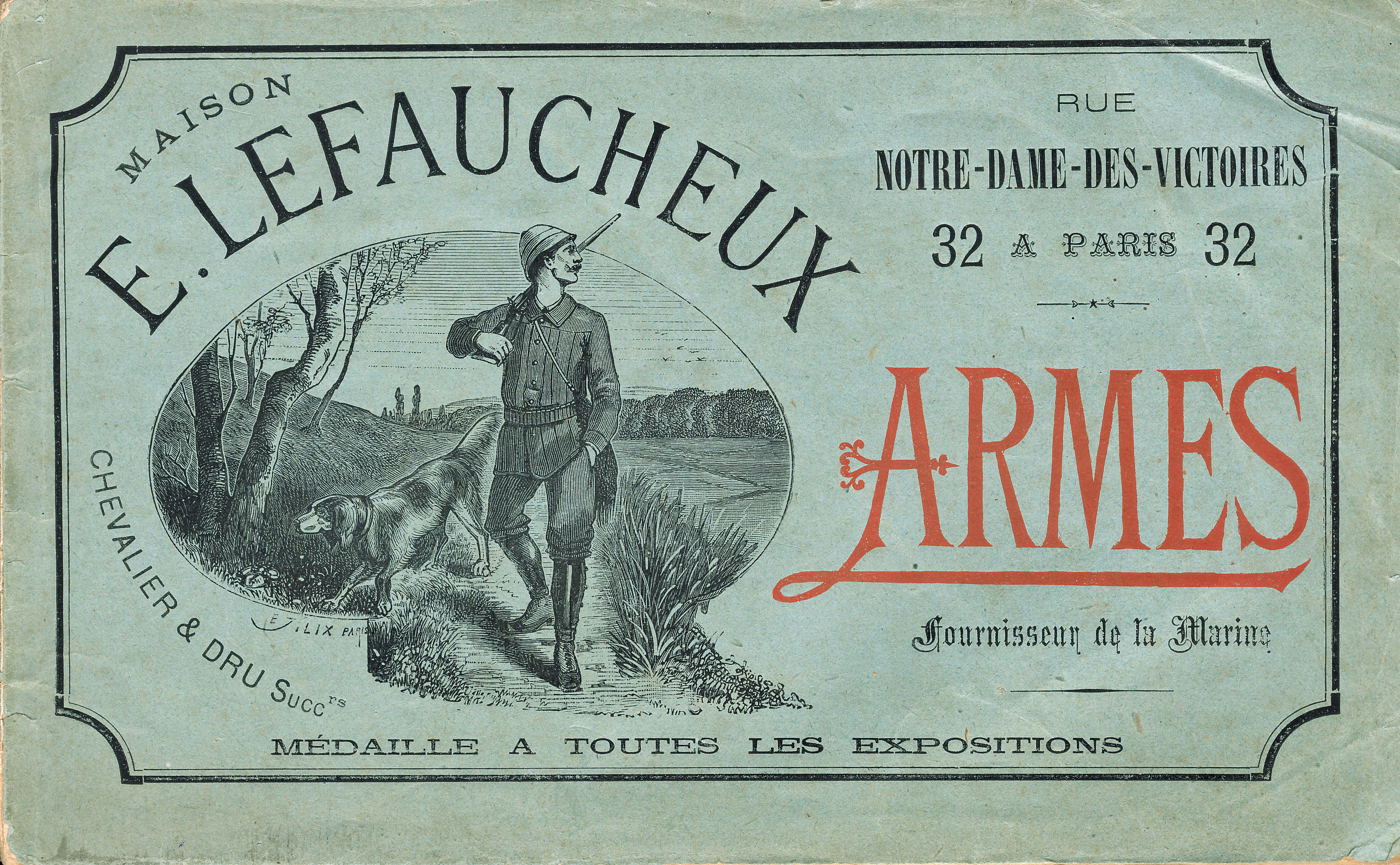
On November 15, 1881, Eugène transferred his Parisian operations to the company Chevalier et Dru, including the business assets, the name of Maison E. Lefaucheux (to distinguish it from his brother-in-law Laffiteau’s operations), and the rights to exploit his patent 131.616 with its additives. The agreement prohibited him from further manufacturing or trading in arms. The Trémerolles factory ceased all activity around 1887.
In his later years, Eugène purchased the villa Sainte Marguerite in Cannes on March 25, 1891, in the district of La Bocca. Unfortunately, he passed away on March 24, 1892, from a cerebral congestion, leaving behind an unfinished letter. Like his father, he was laid to rest in the family vault at the Montmartre cemetery in Paris, marking the end of a significant chapter in the history of firearms development.
For further inquiries or to explore more about Eugène Lefaucheux’s contributions to firearm technology, please contact Guillaume van Mastrigt at [email protected] or visit www.lefaucheux.net. As the custodian of the Eugène Lefaucheux Family Archives, Guillaume continues to offer invaluable resources and knowledge, enriching the understanding of this remarkable family’s impact on modern firearms and industrial innovation.
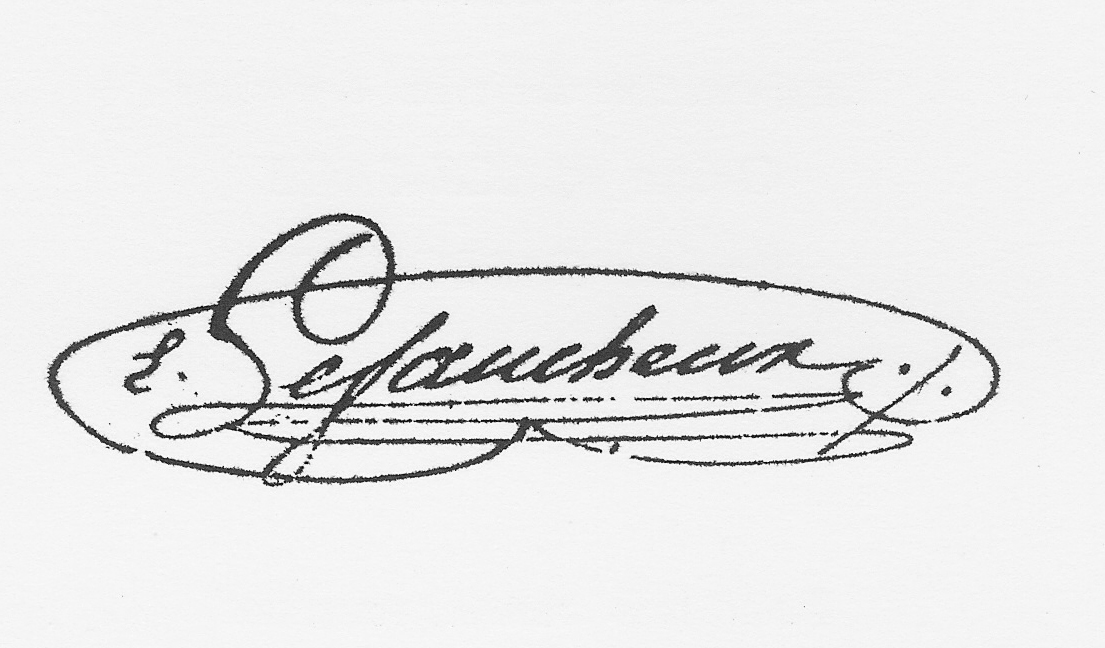
Explore the Legacy at The Lefaucheux Museum
Immerse yourself in the innovative world of the Lefaucheux family at The Lefaucheux Museum. This online-only platform is dedicated to showcasing the groundbreaking contributions of Eugène Lefaucheux and his predecessors in the realm of firearm technology and design. Through meticulously curated digital exhibitions and interactive timelines, the museum not only highlights significant historical artifacts but also offers educational resources that bring the 19th-century advancements to life. Join us online to discover the rich history and profound impact of the Lefaucheux family on modern engineering and manufacturing.

